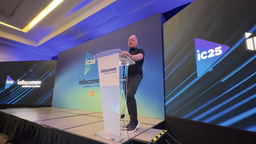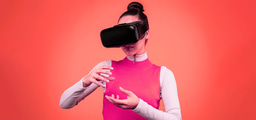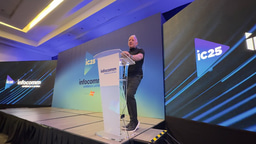How creativity and Design Engineering in AV industry Connects with Each other for Solution Engineering?

Here’s how creativity and design engineering connect to form the backbone of solution engineering:
1. Creative Vision for Problem Solving Meets Engineering Feasibility:
-
- Creativity in Solution Engineering: Creative professionals, including designers and AV consultants, approach the solution engineering process by focusing on how the AV system can provide a unique and engaging experience. This involves brainstorming creative ways to address the specific needs of the client, whether it’s a visually stunning display, immersive sound system, or innovative interactive elements.
-
- Design Engineering’s Role in Feasibility: Design engineers take these creative concepts and evaluate how to make them work within the physical, technical, and budgetary constraints of the project. They ensure that the design is not only possible but also efficient, cost-effective, and scalable. For example, a creative team may envision an interactive 360-degree video wall, and the design engineers would figure out the technical aspects of system integration, hardware selection, power requirements, and network design.
2. Creative Exploration of New Technologies and Engineering Implementation:
-
- Creativity in Exploring New Tech: Creativity often drives the exploration of new technologies and innovative approaches to AV systems. For example, designers may explore cutting-edge technologies such as immersive AR/VR environments, interactive displays, or AV over IP solutions to deliver modern, engaging experiences.
-
- Engineering for Practical Integration: Design engineers assess how these new technologies can be integrated into existing systems or how new systems can be created to support them. For instance, engineers would choose the right servers, networking protocols, and control systems to ensure that the creative use of AR or VR is feasible and effective in a live installation or event.
3. User Experience (UX) and System Architecture Design:
-
- Creativity for User-Centered Design: The core of any AV solution is often its user experience. Creative professionals design AV systems with the end-user in mind, focusing on making the experience intuitive, interactive, and engaging. For example, creating a simple control interface for complex AV systems or designing immersive environments where users can interact with video or sound elements.
-
- Design Engineering for User-Centric Functionality: Engineers design the technical infrastructure that ensures the system’s usability and functionality. They work on creating smooth user interfaces, reliable control systems, and seamless integration of audio-visual elements. For example, engineers would select the best interfaces and communication protocols (such as touch panels, remote control, or mobile apps) to ensure that the AV system operates smoothly for users with varying technical expertise.
4. Custom Solutions and Integration for Unique Client Needs:
-
- Creative Customization: Creative professionals tailor AV solutions to meet the specific needs of clients, whether it’s for an office, an entertainment venue, or a museum. They design bespoke solutions that reflect the brand identity, user preferences, and spatial constraints.
-
- Engineering for Customization: Design engineers work on customizing the AV systems to match the creative vision while ensuring all components are compatible and integrated. This may involve custom-made mounts, specialized wiring, or tailored acoustical treatments. For instance, in an art gallery, engineers may integrate projection mapping in a way that ensures the creative design is achieved while the system is still technically feasible and easily maintainable.
5. Creative Collaboration for Seamless Integration:
-
- Creativity in Design Collaboration: In solution engineering, creativity plays a crucial role in collaboration between different teams. Designers work with content creators, lighting specialists, and other AV professionals to develop the concept and ensure that the system supports the desired outcome.
-
- Engineering for Coordination and Integration: Engineers ensure that all components—whether hardware, software, or systems—work together seamlessly. They coordinate the integration of various AV technologies, ensuring that audio, video, control systems, and networking solutions complement each other. For example, engineers may integrate various video sources into a single display system or ensure that audio is synchronized with visuals in real-time for an immersive experience.
6. Designing for Scalability and Flexibility:
-
- Creative Vision for Future Growth: Creativity is crucial in designing systems that are scalable and adaptable to future needs. For example, a creative team might design a solution that can grow over time, with the ability to add more displays, sound systems, or interactive features without a complete overhaul.
-
- Engineering for Scalability: Engineers ensure that the system can handle future upgrades and expansions. They design the infrastructure to support easy integration of new devices, whether it’s through modular components, upgradable control systems, or cloud-based solutions that allow for easy remote management and upgrades.
7. Immersive Experiences and Technical Engineering:
-
- Creative Immersion: AV solution engineers often work on creating immersive environments, whether it’s a home theater system or a museum exhibit. Creative input drives the desire to create emotionally engaging experiences that captivate the audience with audio-visual elements.
-
- Engineering for Immersion: Engineers ensure that the technical side of the immersive experience delivers high-quality performance. This could mean optimizing sound for acoustics, ensuring that video is crisp and synchronized, or integrating systems like lighting and sensors to enhance interactivity. For example, engineers may fine-tune the sound system for a 3D cinema experience or design lighting that enhances the realism of a virtual reality setup.
8. Problem Solving for Complex Systems:
-
- Creative Problem Solving: AV solution engineers often deal with challenging scenarios—such as installing systems in unconventional spaces (like old buildings or outdoor environments)—that require creative thinking. Designers might come up with innovative solutions to overcome limitations like space constraints or unique acoustics.
-
- Engineering for Problem Solving: Engineers apply their technical expertise to make these creative solutions work. They may design custom mounts, reroute wiring, or implement specialized acoustic treatments to solve issues like sound distortion or signal interference. They might also create backup systems to ensure reliability in case of failure, such as redundant power supplies or failover solutions.
9. Aesthetic Integration and System Performance:
-
- Creativity for Aesthetic Appeal: Creativity often focuses on how to make the system blend seamlessly into its environment. This includes designing systems that are visually pleasing, fit within the architectural space, and align with the client’s brand or objectives.
-
- Design Engineering for Aesthetic Functionality: Engineers make sure that the aesthetics of the system do not compromise its performance. This includes selecting equipment that not only fits within the aesthetic design but also meets the necessary technical requirements, such as providing sufficient power, ensuring optimal sound quality, and integrating visual displays effectively.
So, in Result we can say that in solution engineering within the AV industry, creativity and design engineering work in tandem to create systems that not only meet technical requirements but also engage, inspire, and captivate users.
Creativity provides the vision for innovative, user-centered experiences, while design engineering makes those visions achievable, reliable, and scalable through technical expertise.
Their combined efforts ensure that AV solutions are both visually appealing and functional, meeting the client's needs while overcoming the challenges of space, technology, and budget.
If anyone has any opinion on this topic, please give your feedback...Thanks.
-
Xchange Advocates are recognized AV/IT industry thought leaders and influencers. We invite you to connect with them and follow their activity across the community as they offer valuable insights and expertise while advocating for and building awareness of the AV industry.







Please sign in or register for FREE
If you are a registered user on AVIXA Xchange, please sign in